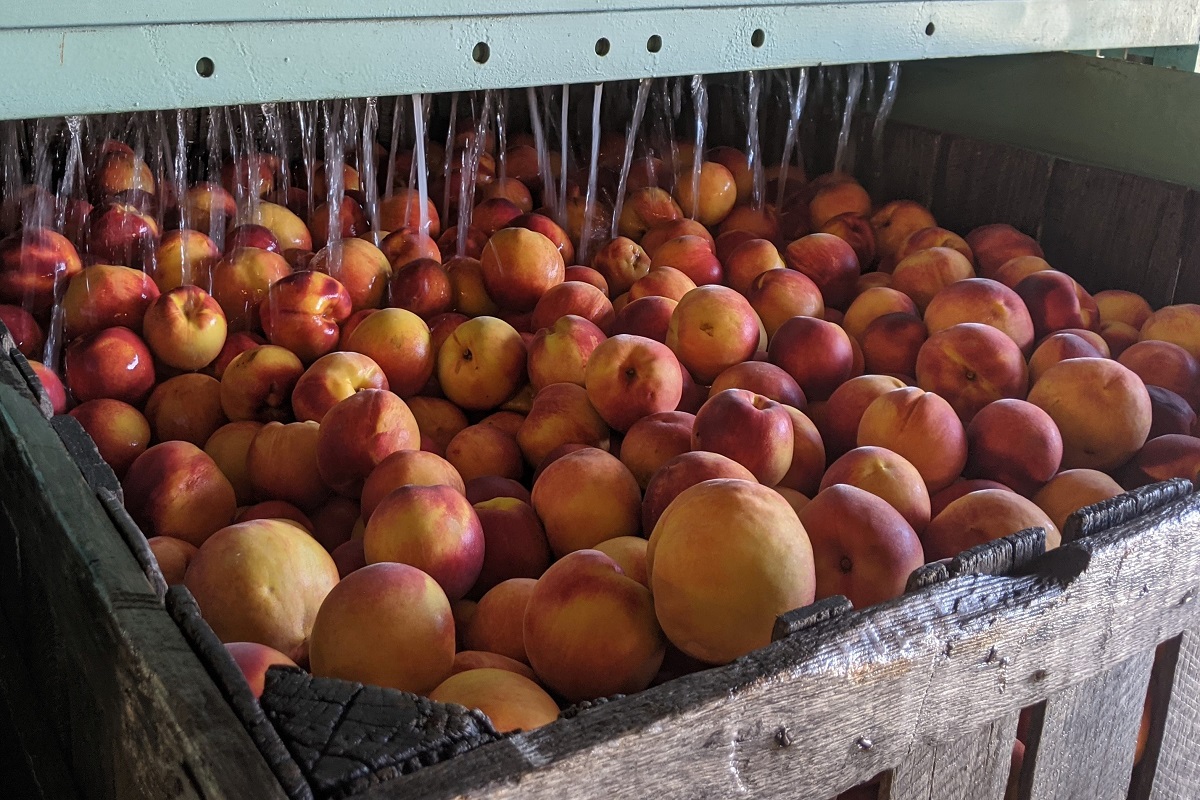
While thousands of Illinoisans go hungry every day, up to 40 percent of food goes uneaten. The Illinois Sustainable Technology Center (ISTC), Feeding Illinois, and other organizations are partnering to explore new, viable ways to connect farmers directly with food banks to increase the state’s food supply for the food insecure and reduce waste.
The Farm to Food Bank program partners are conducting a feasibility study for a statewide program, identifying approaches to address barriers, evaluating logistical challenges, and uncovering locally appropriate strategies. The result will be a roadmap used to roll out a state-funded program in Illinois, according to Zach Samaras, ISTC technical assistance engineer.
Besides ISTC and Feeding Illinois, study collaborators include the Illinois Farm Bureau and the Illinois Specialty Growers Association. In the first year, the team has conducted a farmer survey, started a pilot project, and visited the eight state food banks.
Farmer survey
One of the first actions was to create and distribute a statewide survey to farmers. Questions pertained to the type of product that farmers produce, their marketing strategies, barriers to production, and food losses. Slightly less than 10 percent of survey participants responded. The next step is survey analysis.
Farmers are also being recruited for focus groups to be held at an agricultural conference in early winter. This will be an opportunity for the collaborators to gauge farmers’ interest in the possibility of participating in a Farm to Food Bank program and collect further information on factors that would make participation more feasible for producers. Those interested in participating in focus groups should contact ISTC at info-istc@illinois.edu.
Pilot project
In the first pilot project, which started this summer, Rendleman Orchards in Alto Pass donated grade 2 peaches to a food bank in southern Illinois. Grade 2 produce is typically small or has slight blemishes.
The organizations are looking to find an optimal mixture of incentives for farmers to participate in the program. In this case, the farm receives a tax deduction for the donated produce and reimbursement from Feeding Illinois and the food banks for the “pick and pack” costs.
The pilot project quickly scaled up from two pallets of peaches transported to one food bank in southern Illinois to over 40 pallets sent to four food banks in various parts of the state.
“While we are very happy with the numbers, our biggest goal was to build relationships between the farmers and the food banks and develop a process that could work for a variety of farms across the state,” said Samaras. “We certainly feel like we are on the right track.”
Farmer feedback
Since the program began, farmers have been receptive to learning more about the opportunity, said Steve Ericson, executive director of Feeding Illinois. Actual participation has been more challenging because once the growing, harvest, and marketing seasons begin, farmers find it too disruptive to start or change plans already in place. Also, it is important not to interfere with existing relationships farmers have with food pantries, which are distribution centers that receive food from food banks.
“The primary thing we’ve learned in this first year is that this is a learning year, Ericson said. “The interest is definitely there. In general and by nature, farmers are community-oriented. ‘Helping others’ is in their DNA. We want this program to provide a meaningful way for them to do that as a group and individually.”
A major future challenge will be determining the logistics of transporting a certain volume of produce efficiently from the farm to food banks. The growing season for specialty crops in Illinois is only six months long, a time when farmers are consumed with work at the farm. Another barrier is that Illinois’ specialty crop farms are for the most part smaller and more widespread than those in other renowned produce states.
Convincing farmers that it is worthwhile to build business relationships with food banks versus contributing locally will take time to instill and to prove the benefits, Ericson said.
The Farm to Food Bank program is supported by the USDA through The Emergency Food Assistance Program. For more information, visit the Farm to Food Bank Program website.
—-
Media contact: Zach Samaras, 217-265-6723, zsamaras@illinois.edu
news@prairie.illinois.edu

